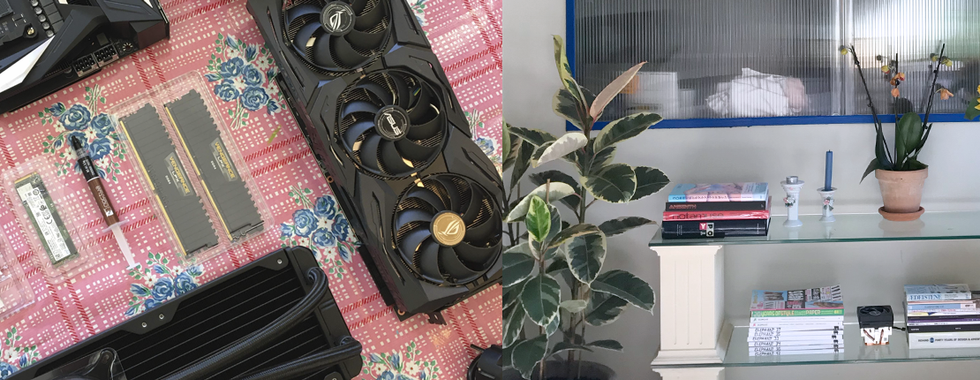On the day that Elon Musk announced he would be acquiring Twitter, decentralized social network Mastodon gained roughly 30,000 new users—and hundreds of thousands of other Twitter users deactivated their accounts in response to the news.
Over the past few years, Twitter, which has hundreds of millions of users, has become an increasingly hostile and stress-inducing digital environment. And with potential Musk’s takeover and proposed changes, it seems there’s a new urgency among creatives to seek out or create smaller, more intimate spaces of online sanctuary.
Mastodon, which was founded in 2016, has always been considered the open source alternative to Twitter, given the similarity of its microblogging functionality (though the requirement for users to set up self-hosted servers has been a barrier to entry for some). Other server-based platforms, like Discord, have seen a solid increase in registered users over the past few years, growing from 45 million users in May 2017 to 350 million in June 2021. And those aren’t the only smaller platforms experiencing—or pushing for—big change.
Indeed, the friendliness of the early web seems poised for a comeback, with lo-fi, open source platforms like NeoCities providing enough nostalgia and glittery kawaii gifs to help us all forget about our 24/7 social feeds for a while. Tech and gaming blog Polygon recently wrote that the static web hosting site is a welcome relief from conventional social media like Twitter; that, “rather than a constantly rushing river of information, Neocities sites are like homes where users fix them up, spend time on them, and invite others to visit.” While the dominant tech culture glorifies exponential growth, fast solutions, and endless optimization, sites built on NeoCities, like Cinni’s Dream Home, feel like a radical departure from the norm. Especially when you read an intro that says, “just wander around and take it easy.”

More creatives are approaching digital spaces with that same slower pace as an intentional practice. Copenhagen-based Softer is “a work-in-progress platform built on a feminist consciousness,” and is committed to rewriting the narrative that tech must always be hard, fast, and optimized. Founded in 2020 by digital designer Nicole Jonasson and 3D artist Ida Lissner, they believe that softer values, such as care, empathy, community, collaboration, and multiplicity can create a more equitable tech future.
Take a visit to Softer’s website or Instagram, and you’ll be greeted by a pastel palette of organic 3D shapes and rounded sans-serif typography, along with a great archive of free tutorials on software like Cinema 4D for beginners, and profiles of other 3D artists working with similar values. “The aesthetic is where we started this journey because we didn't feel like the aesthetics around 3D technology really spoke to us,” Lissner explains. “It was important for us to create a visual universe that would invite people like us in who didn't feel like they connected with the traditional tech aesthetic or paradigm.”
In addition to tutorials, Softer has hosted live streams, virtual exhibitions, and residencies, including a recent gathering titled Softer Digital Futures, where a panel of 3D artists and technologists explored softer visions for tech like Alice Yuan Zhang’s 张元 Virtual Care Lab, as well as the structural issues and challenges which are currently embedded in it. “We're so used to thinking about tech as always having to be better and faster; that it’s the solution to every problem. Soft values are often neglected in this field, so we're trying to shift the focus towards slowing down and taking care of each other,” Lissner says.
Images of Softer branding, conference, and its founders Nicole Jonasson and Ida Lissner. Images courtesy Softer.
Naj Austin, founder and CEO of the wellness social club Ethel's Club is also exploring the concept of slow tech with her audio-based social networking app Somewhere Good. Founded in 2020 after raising a VC round of 3.7 million, Somewhere Good is designed for intimate community conversations through the exchange of voice notes within themed worlds based on daily prompts that refresh every 24 hours.
“We designed the app to be warm, and familiar; like you're sharing stories and conversations at a dinner party,” Austin explains. “Most social platforms are made for you to be scrolling, doing five things at once; you're not really present. We wanted to fully move away from that. By focusing on voice and audio we’re really trying to create a more emotional relationship online with one another.”
Somewhere Good's values. Images courtesy Somewhere Good.
If you're one of the app’s 5,000 current beta users, you'll know that visually it looks unlike any other social platform that you've been on. There’s no “DM” feature, and all user interactions happen through prompts called “seeds,” where users add their replies to someone's voice note and then petals in that seed grow.
Creative director Annika Hansteen-Izora says using natural elements as part of the app’s visual language helped to represent their values of long term growth and creating deeper connections while also asking the question: How can the design of an app alter your experience of what the internet can be? “So many other social platforms are really rooted in minimalism and making the contours of people's personalities digestible,” Hansteen-Izora explains. “We chose a more whimsical and otherworldly route that felt playful, that says in this space, ‘you're entering a digital world that wants to celebrate your full self.’”
The Somewhere Good team; the platform's branding and UI design. Images courtesy Somewhere Good.
As for when Somewhere Good will be released to a wider audience, Austin is not in any rush. “We're going against the grain of 20-plus years of what it means to be online and connected, so we're moving slowly and intentionally in terms of who is gaining access to the platform,” she explains. “When we do open up publicly, we want to ensure that the behavior of what it means to be on Somewhere Good is very obvious and already established.”
Both Austin and Hansteen-Izora hope that the future of online communities will provide people with more experiences of deeper connection. “I don't believe that the internet can ever be a utopia,” Hansteen-Izora says, “I don't believe in utopias, but I do believe that we deserve better than what we've been offered thus far. I believe very deeply in the possibility for experiences where people can feel more tenderly held online, where they can feel safer online, and where they feel permission to bring more of their full selves.”





























